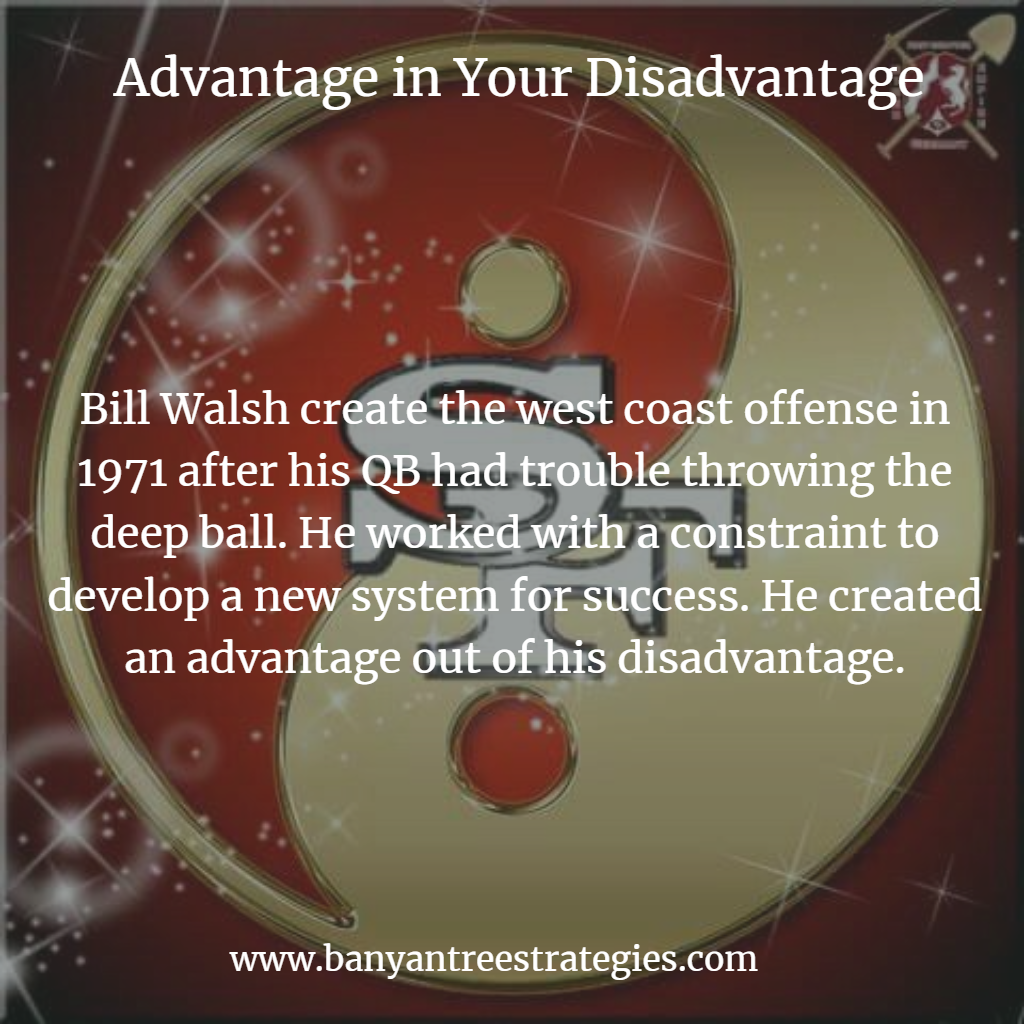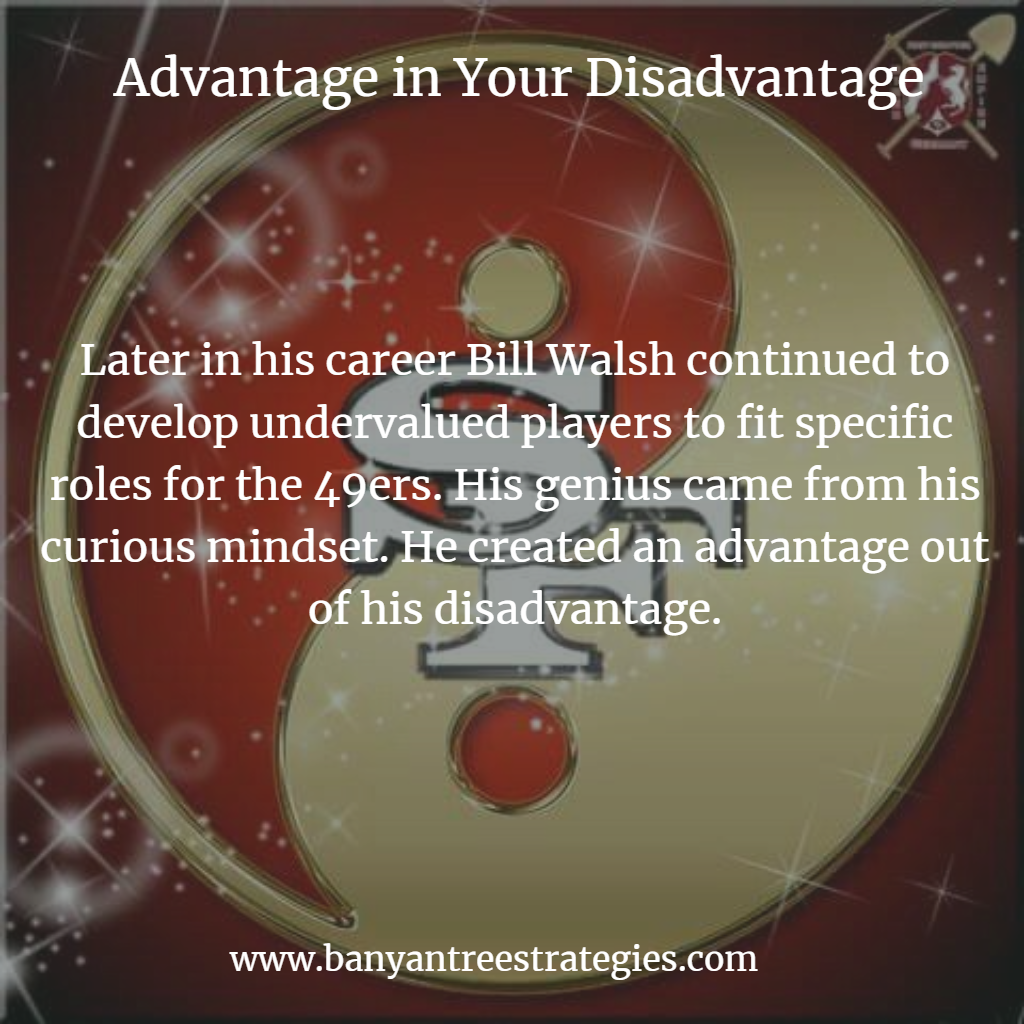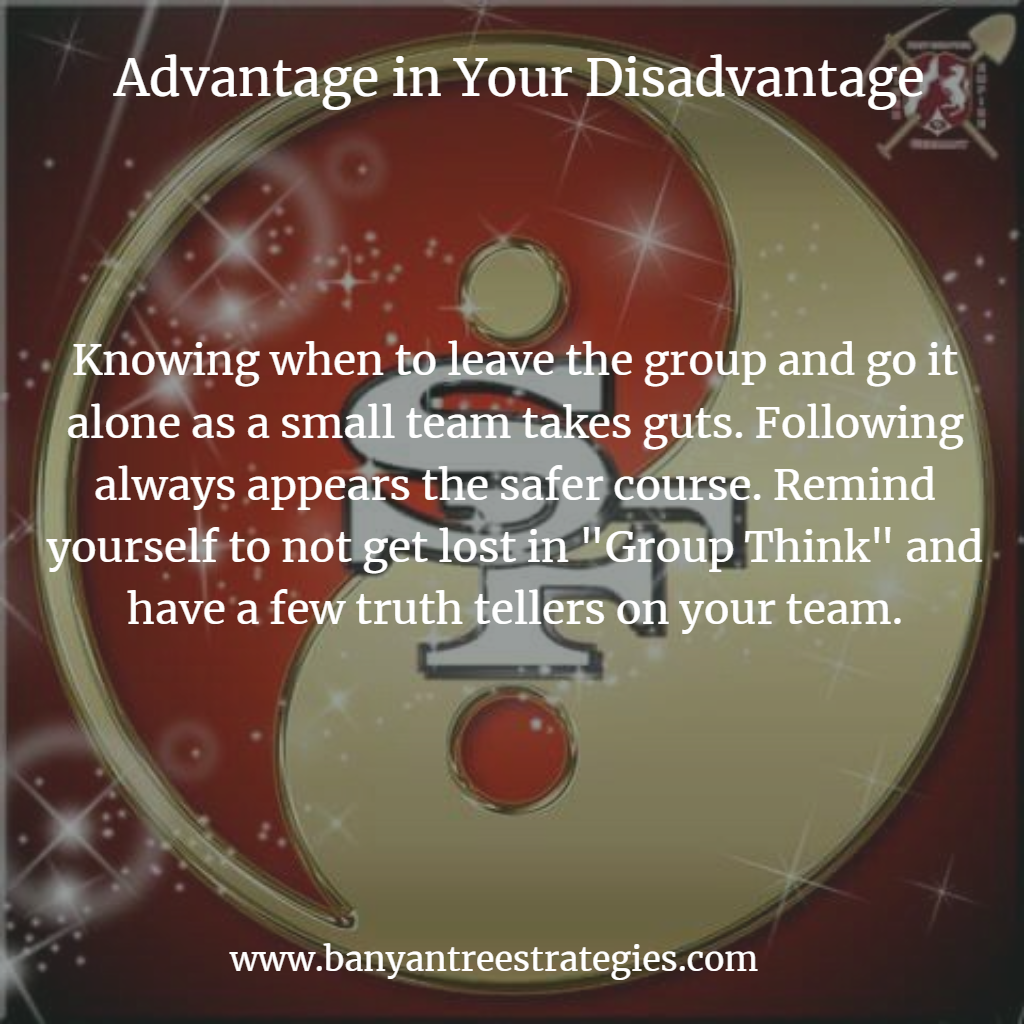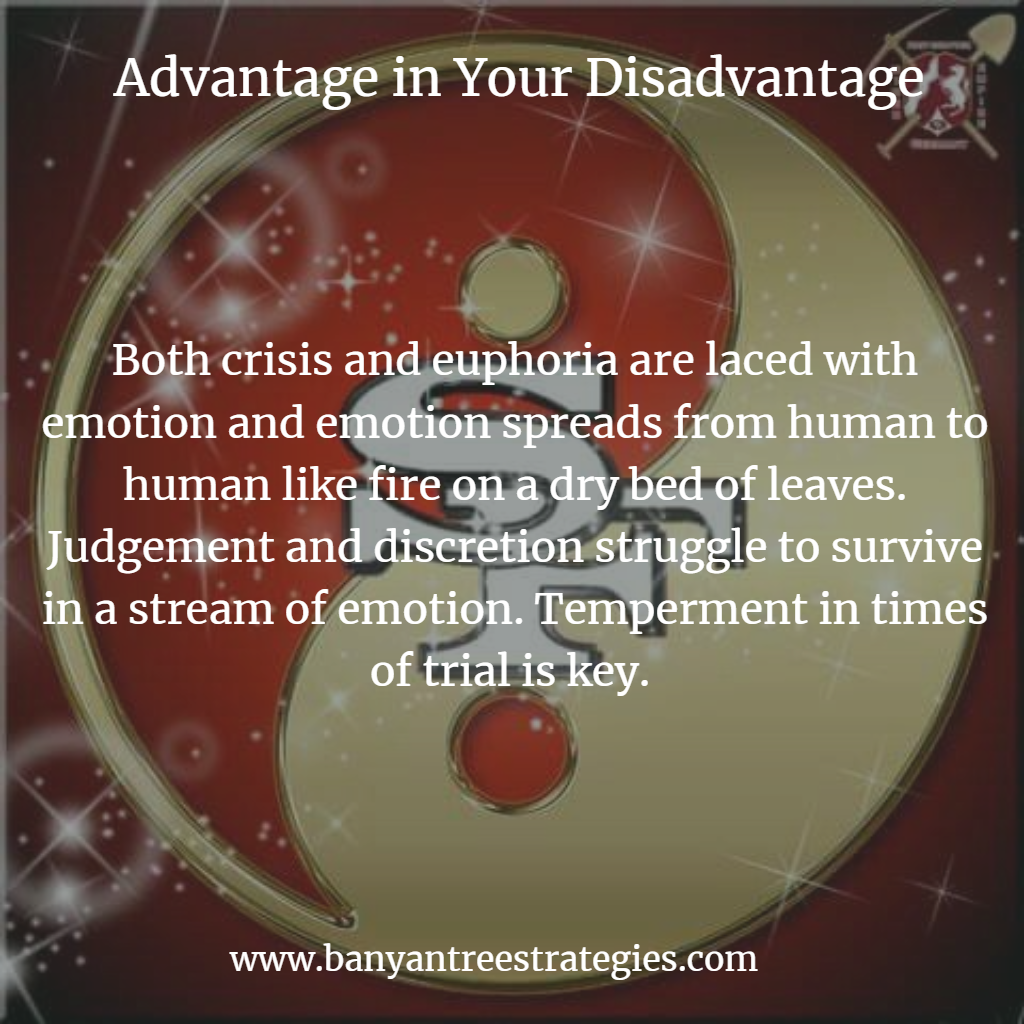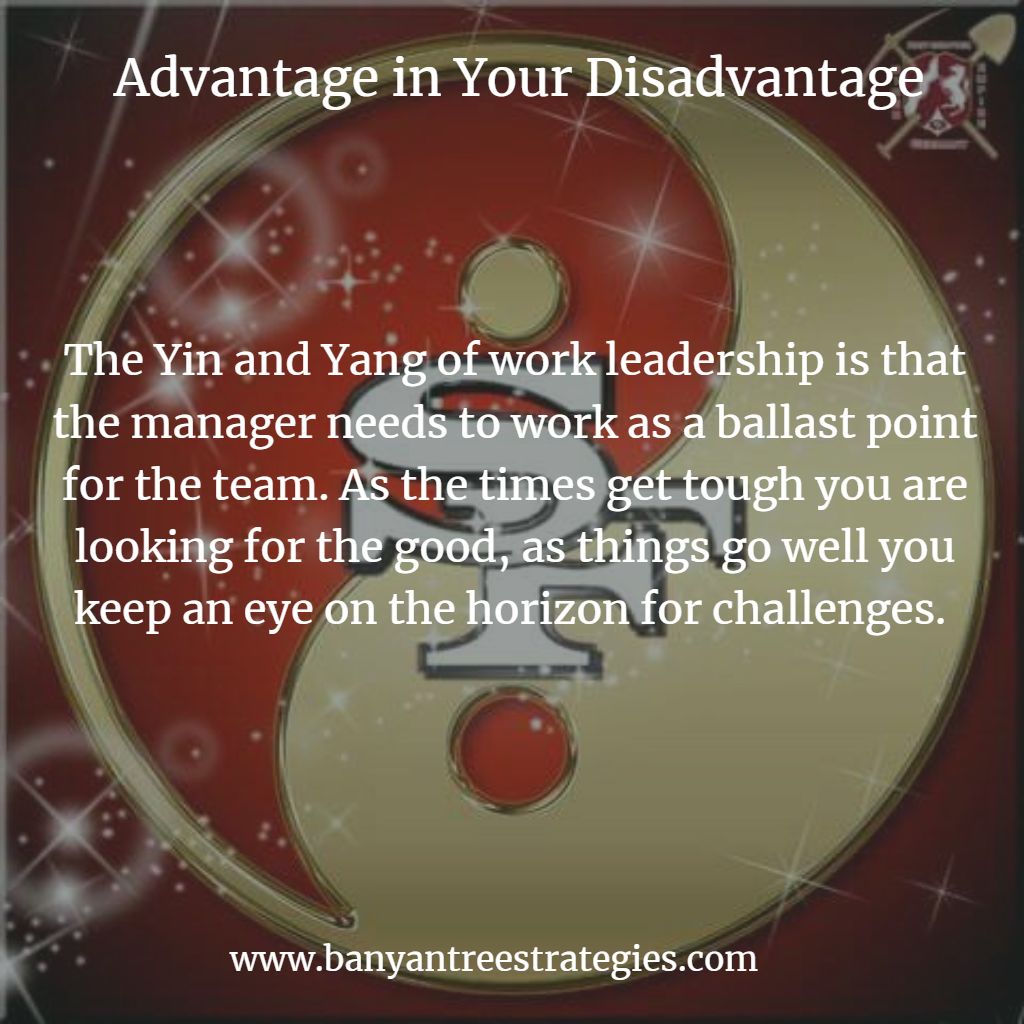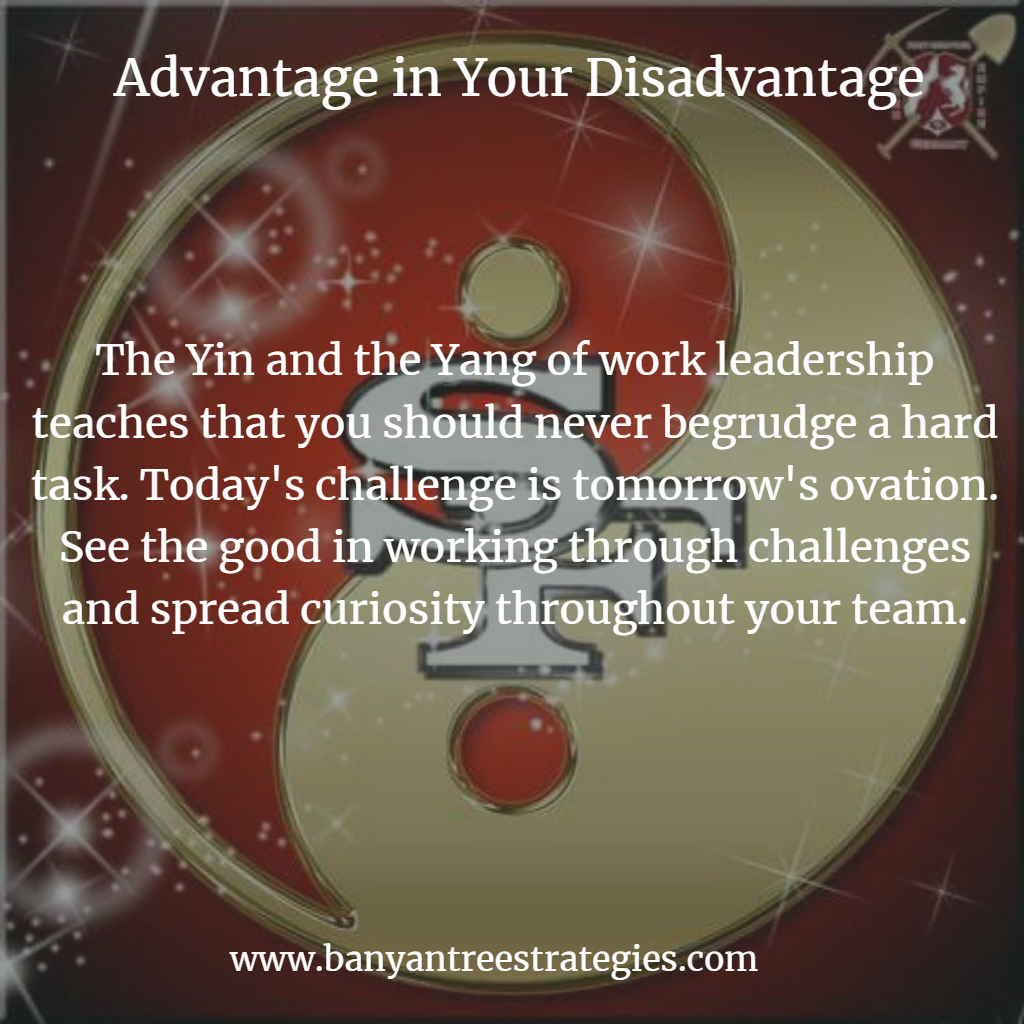The Advantage in Your Disadvantage |
|
The Scoop
When things are going poorly, or you appear to have a disadvantage to your peer group, find the advantage this is creating for you.
The Skinny
• Get this right and you will have a great ballast point in your life.
• Bill Walsh used this key to create the west coast offense
• This is the dot in the Zen symbol
• Your internal centering point to stay the course.
When things are going poorly, or you appear to have a disadvantage to your peer group, find the advantage this is creating for you.
The Skinny
• Get this right and you will have a great ballast point in your life.
• Bill Walsh used this key to create the west coast offense
• This is the dot in the Zen symbol
• Your internal centering point to stay the course.
|
Bill Walsh had a problem in 1971. The Cincinnati Bengals had drafted Virgil Carter to be the next quarterback. Carter looked every part of a QB at the time, except he had one problem. He couldn’t throw the ball deep. A key part of the offensive schemes of the time was to have a quarterback who could take a seven step drop and then heave a huge pass down the field to keep the defensive backs honest while you tried to run the ball.
Walsh needed to score points, and instead of saying that Carter wasn’t the right guy, Walsh started to see a new set of skills that might be of use if Carter and the running backs and tight ends could start to get into a type of rhythm. The goal: get the ball 3–7 yards down the field quickly with a short pass, and see if your guy can make a play from there with most of the defensive players now behind him. This small idea with a short-armed quarterback worked! It was from this apparent problem that “The West Coast Offense,” the system that changed football for 40 years, was born. Known later in his career as “The Genius”, Walsh continued to find “out of the market” players of the time and piece them together to win four Super Bowl titles. We think part of Walsh’s genius was his ability to see an advantage in an apparent bad situation. When you start thinking like Bill Walsh, you may have just stumbled upon a major sustainable creative advantage in your life: the ability to see opportunity when all others see are problems. Digging deeper we start to see how seeking opportunity in crisis is a long-term strategy for countless groups and people. Warren Buffett is known as the world’s greatest investor and is always looking to buy when others are selling. Yet while it seems easy on paper, it is quite hard to zig when the crowd zags. The social norms of compliance are deeply ingrained in our primal systems. The human who zigs when the crowd is being chased by a tiger is going to die and not pass on its genes to the next generation. When you ask yourself - why is it so hard to get this right? - it is because your ancestors had to run away from large animals, and sensing the group was a key to survival. Knowing when to stay with the group and when not to takes time, but as we hope to see in this post there are a few things to keep in mind while things are going well. Or going poorly. A lasting image from Asia is the yin and yang symbol. Interpreted by many to show duality, harmony, and blending, we suggest you focus on the small dot that is sitting in the opposite color field. Look at the black dot in the white field as the problem in your opportunity, and the white dot in your black field as the opportunity in your problem. Said differently, you need optimism in crisis, and your need sober judgment in times of euphoria. The yin and yang symbol can be a nice trigger for your brain to maintain its perspective in either situation. Both crisis and euphoria are laced with emotion, and emotion spreads from human to human like fire on a bed of dry leaves. The trouble is that as the emotion spreads, others sense judgement, and discretion takes a back seat. Having the ability to keep your composure while others are losing theirs is vital piece of your leadership training. You want to seek out the opportunities to have challenges and survive them. As you build out your ability to see opportunity where others see only problems, you are building out one of the best sustainable competitive advantages a person can have. This way of thinking can be viewed as having a ballast point. You can also think of a separate scale, where as one weight leans in one direction, the other moves more slowly to the middle. It allows you to go with the emotion, but also to still see the middle or the other side and maintain your course. Essentially you are seeking to not stand out so much such that you are a perceived as a zealot. The group eats the zealot. Yet you want to have the insight to be one that sees the spreading fire of emotion, or the tide of disapproval, and then starts to think differently. Where might this action you see that is required build out a future skill? Where might this person who appears to be poorly made for this job work in a different place and flourish? Twenty-five years ago, when moving from a quarter based university to one that taught in a semester format, forced me to take the same English course three times. It was all about writing. Funny thing about that situation, I had to write and write, which wasn’t easy for my brain at the time. Yet today I write almost every week, and I love it. Life is full of these ironies, just make sure you are ready to embrace them when they show up. Vertical Divider
|
